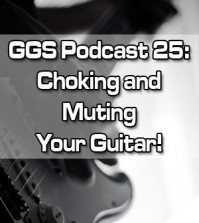Your No-Nonsense Guide To Guitar Setup
#5: Adjusting the Action
If you’re a light player, you can get by with a low action, but you’ll need to raise it higher to prevent any buzz or rattling.
For Gibson models, there are two adjustment screws to adjust the height of the bridge.
Fender models usually have an individual saddle for each string so you can adjust them one by one – look out for two screws for every saddle to adjust the height. You’ll probably need to use a 1.5mm allen wrench to do this.
Before adjusting the saddles, remember to check the tuning. Using a ruler (we recommend a six-inch/150mm type), place it on top of the 12th fret and measure both the high and low E string at the same fret.
Then, set the distance between bottom of the high E string and the top of the 12th fret to 2/32 inch by adjusting the saddle with your allen wrench. As for your low E string, you’ll also need to adjust the saddle to adjust the height at the 12th fret, but this time with a measurement of 3/32”.
Using a radius gauge, place it on your guitar (sitting on the low and high E strings while coming into contact with the middle strings) to find out the height of the middle strings in relation to the outside strings. They should all be the same height more or less.
The difference with the Gibson models is that you only have to check the measurement of the two end strings – those are the only ones which are adjustable (as opposed to the other inner strings which are not). Thus, it doesn’t have individual saddles which can be adjusted – you’ll need to calibrate the height of the whole bridge.
To adjust the action on the Gibson, measure the height of the strings over the fingerboard – start from the top of the 12th fret, then to the bottom of the string you want to measure.
You can try set the action to a measurement of approximately 2.0 mm for your highest gauge string. For the lowest gauge string, go for about 1.5mm.
Regardless of your guitar make, you can re-tune your axe and go back to the 12th fret to see if the action of your outer strings have changed. Repeat the adjustment process if you find that the strings are too high for your taste.
Remember, adjust it too low and it can affect the strings; on the other hand, it will be too hard to play if the action is too high. In time, you’ll be able to get a feel of the ideal action (through trial and error) to prevent any rattling.
#6: Pickups
This is one area you shouldn’t ignore, as setting them too high can screw up your performance. As a rule of thumb, don’t keep your pickups so low that it falls into the guitar, or too high that it touches the strings, creating all sorts of unpleasant sounds.
It’s important to check the maximum height for the kind of pickup you’re using since the strength of each brand varies. You’ll get a thinner sound with a raised pickup, while a lowered pickup results in a tamer or smoother sound.
Some guitarists press down the highest and lowest gauge strings at the last fret to measure the distance of the pickup poles in relation to the bottom of the strings. They like to literally play it by ear to get the right tonality they want.
If you want to get really precise though, check the specific pickup brand you’re using for an exact measurement. This will give you a basic point of reference – however, it still boils down to your personal taste.
#7: Intonation!
This is crucial since a properly intonated guitar will make sure your fretted chords will always be in tune (and not just your open strings).
The basic way to do this is by putting the pickup selector to the middle setting. Next, your volume and tone should be at maximum – after that, go over the strings one by one at the 12th fret, and press the string evenly to the fret rather than the fingerboard.
Go from harmonic to fretted note while doing this. You’ll also want to use an accurate tuner as this will be the basis during intonation.
You can adjust the strings either back or forward if your notes are too sharp or flat. You’ll need to re-tune and play every time when adjusting the intonation, which is needed before you compare the open and 12 fret notes.
The rule is: using a tuning reference, play a 12th fret harmonic on the bottom E string and then compare this with a note fretted at the 12th fret. The two notes should be exactly the same.
If the fretted note is sharp, then the saddle (or individual saddle) needs to be moved BACKWARDS towards the tailpiece.
If the fretted note is flat, the saddle needs to be moved FORWARD towards the pick-ups.
When the two notes are the same, the string has correct intonation. I find that the easiest way to remember all this is to think about flat and forward both beginning with the same letter. Think: “Fret, Flat, Forward.”
Also, you have to be in playing position to make sure your intonation is precise when you’re doing these adjustments.
And there you have it! Making a habit of setting up a new guitar will make sure your playing is always on-point and tight. Of course, your playing style (e.g. metal, blues, jazz, country) will greatly affect the way you set up your guitar, but these basic guidelines will get you on your way to becoming an innovative guitarist.






You must be logged in to post a comment Login